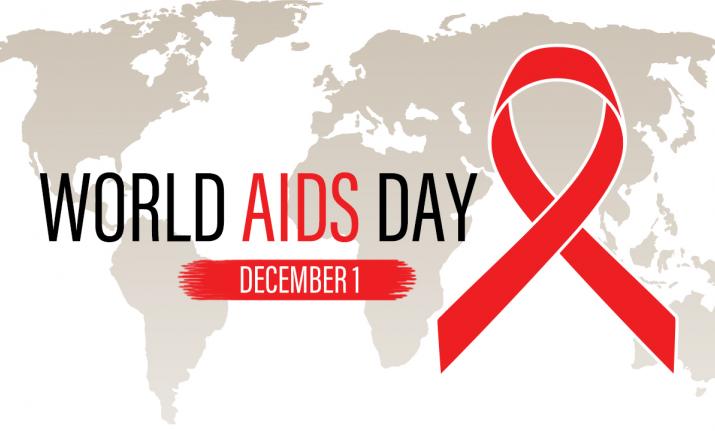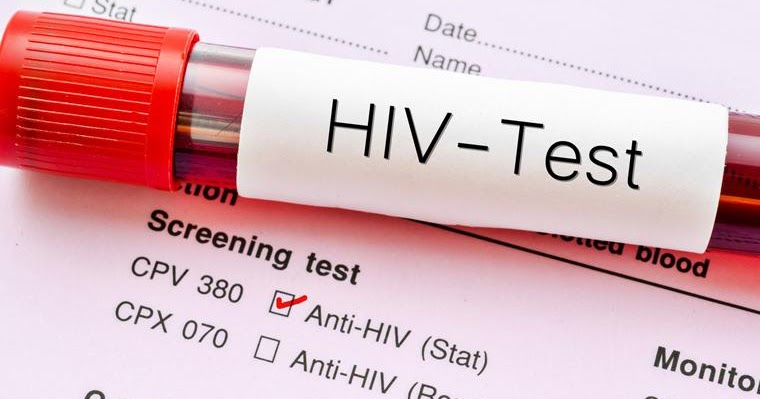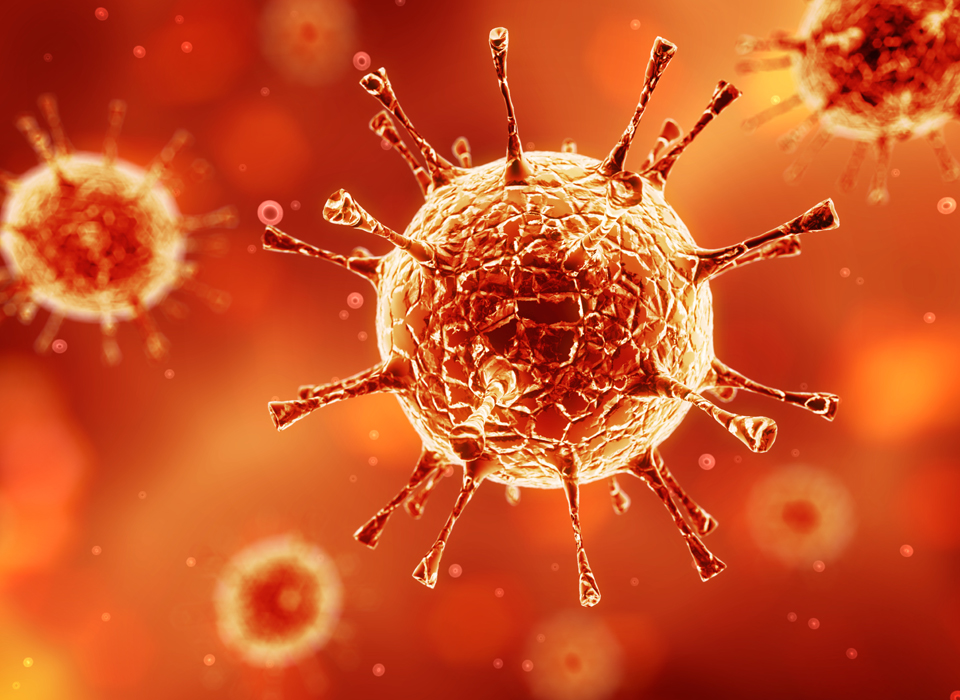HIV/AIDS

Early symptoms of HIV Some people with HIV have no for months or even years after contracting the virus. Last medically reviewed on November 5, 2020. chills• Safer sex The most common way for HIV to be transferred is through anal or vaginal sex without a condom or other barrier method. skin-to-skin contact• If you're pregnant, get medical care right away. Talking to your health care provider about :• They can remain anonymous and call for results the next business day. As a result, a person may be persecuted, isolated, or excluded. These antiretroviral medications are grouped into six classes:• general aches and pains• Campaigns Many Federal agencies have developed public awareness and education campaigns to address HIV prevention, treatment, care, and research. Pneumonia• sharing a toilet, towels, or bedding• stage 3: AIDS As HIV lowers the CD4 cell count, the immune system weakens. Rash,• Cases of HIV progress through three stages:• through exposure to the blood, semen, vaginal and rectal fluids, and breast milk of someone living with HIV, such as through a needle stick The virus can also be transmitted through a blood transfusion or organ and tissue transplant. The team will review and adjust the treatment plan accordingly. chronic swollen lymph glands, especially of the armpits, neck, and groin• PCP is still the most common cause of pneumonia in people infected with HIV. And even if they do, their healthcare provider might suspect the or and might not even consider HIV. A healthy immune system inactivates the virus, and it remains dormant in your body. Online sources for finding a PrEP provider include and. Linking to a non-federal website does not constitute an endorsement by CDC or any of its employees of the sponsors or the information and products presented on the website. Verb They gave money in order to aid the cause. Acute and early HIV infection: Clinical manifestations and diagnosis. Flu-like symptoms can include:• night sweats• Having undetectable levels requires a person to continually receive effective treatment and follow the recommended plan carefully, which usually involves taking medications every day. It happens when the body's immune system is badly damaged because of the virus. For the most part, symptoms of HIV are similar in men and women. HIV is a virus that damages the immune system. Centers for Disease Control and Prevention• getting plenty of rest• Vision loss• They also can appear on the lymph nodes, mouth, gastrointestinal tract and lungs. Types include:• Most people with HIV live long and healthy lives if they get and stay on ART. It is important to remember that, in the 1970s, as now, the epidemic was driven by individuals going about their lives unaware they were contracting, and sometimes transmitting, a deadly infection. With proper treatment, many people with HIV can expect a normal or near- normal lifespan. Prevention There's no vaccine to prevent HIV infection and no cure for AIDS. Histoplasmosis can also become progressive and widespread, affecting organs outside the respiratory system. Swollen lymph glands• Anyone can get HIV, but certain groups have a higher risk of getting it:• Herpes results from infection with the herpes simplex virus HSV. Rapid weight loss• MNT is the registered trade mark of Healthline Media. Symptoms of AIDS can include:• Specifically, HIV can transmit via:• It most often affects black or Hispanic people. It can cause warts on the anus, cervix, esophagus, penis, urethra, vagina and vulva. However, in a person with HIV, especially if it is in the later stages, these infections can spread throughout the body and cause life threatening health issues. Centers for Disease Control and Prevention Also in• Untreated, HIV can progress to AIDS within a decade. Possible signs and symptoms include:• Serious side effects can include swelling of the mouth and tongue and liver or kidney damage. Here are the CDC recommendations:• With antiretroviral therapy, HIV can be well-managed, and life expectancy can be nearly the same as someone who has not contracted HIV. Some people may not feel sick during the earlier stages of HIV infection. Use a new condom every time you have sex. Individuals with HIV and AIDS are at increased risk for developing precancerous and cancerous lesions. It depends on the person and what stage of the disease they are in. If they have a positive result, they should follow up with their healthcare provider to confirm. Progressive Multifocal Leukoencephalopathy PML — Progressive multifocal leukoencephalopathy is a rare disorder of the nervous system caused by a common human polyomavirus, JC virus. The AIDS epidemic began in the late 20th century, at a time when fewer people were dying from other infectious diseases than in earlier periods of history. Shingles herpes zoster• It is the final stage of infection with HIV. The virus can be transferred to a baby through breast milk. Due to medical advances, people with HIV and access to quality healthcare very rarely develop AIDS once they have started taking HIV treatment. Rash• If inhaled, these particles may transmit the condition. People who use IV drugs often share needles and syringes. Treatment can also help a person recover some lost immune function, which will help ward off severe infections. That means you can't catch HIV or AIDS by hugging, kissing, dancing or shaking hands with someone who has the infection. The life expectancy of a person with HIV is now approaching that of someone who tests negative for the virus, provided that the person takes medications called on an ongoing basis. Some common symptoms include:• A person with undetectable levels still has HIV, and regular monitoring with blood tests is key to maintaining this status. These drugs have reduced AIDS deaths in many developed nations. , the most common means of transmission are sharing needles and having sex without barrier protection or a type of preemptive medication called PrEP. Often, there are no symptoms during this stage. If taken consistently, it can lower the risk of acquiring HIV. Learning Opportunities Want to stay abreast of changes in prevention, care, treatment or research or other public health arenas that affect our collective response to the HIV epidemic? HIV is transmitted through blood and can be contracted by using materials that have come in contact with the blood of someone who has HIV. Rates of infection are lower in other parts of the world, but different subtypes of the virus have spread to , , South and , , and the Caribbean. The scientists used a molecular-level technique in their. Consider seeking help for your drug use. Researchers subsequently determined that the infections and cancers were of an acquired immunodeficiency syndrome. With the use of antiretroviral therapy, a person can maintain a chronic HIV diagnosis without developing AIDS for decades. In a person with reduced immune function, herpes can cause painful around the mouth and ulcers on the genitals and anus that do not go away. Memory loss, depression, and other neurologic disorders Each of these symptoms can also be related to other illnesses. There are many ways to get the most out of life when living with HIV. Prolonged swelling of the lymph glands in the armpits, groin, or neck• Without treatment, it can last up to a decade before advancing to AIDS. Pregnancy While certain antiretrovirals can harm the fetus during pregnancy, an effective, well-managed treatment plan can prevent transmission to the fetus. Fatigue• Left untreated, a woman with HIV has a chance of passing HIV to her baby during pregnancy or breastfeeding. People with HIV who get can live long, healthy lives and protect their partners. Sometimes, HIV causes no symptoms for years or limited symptoms that can be easy to mistake for those of the flu. neurologic problems such as trouble concentrating, memory loss, and confusion• recurrent or chronic diarrhea• Most rapid tests and self-tests are antibody tests, and these can detect HIV antibodies as early as 21 days after exposure. Aide: How to Choose the Right Word. Mental symptoms such as confusion and forgetfulness• shaking hands• Expert review of the cases suggested that the disease likely was acquired through sexual contact and that it appeared to be associated with immune dysfunction caused by exposure to some factor that predisposed the affected individuals to opportunistic infection. histoplasmosis• pneumonia• It is important to to reduce your risk of transmission. Cryptosporidiosis is an infection with the protozoan parasite Cryptosporidium. Some health departments or community-based organizations also provide self-test kits for free. cryptococcosis• The treatment is lifelong and involves taking pills on a regular schedule. Treatment is usually trimethoprim-sulfamethoxazole, also called Septra or Bactrim, dapsone or atovoquone. When CD4 cells are severely depleted, at per cubic millimeter, a doctor can diagnose AIDS, which is sometimes called stage 3 HIV. People generally take a combination of medications, called highly active antiretroviral therapy or combination antiretroviral therapy. Through contact with the blood of a person with HIV• HIV is transmitted through bodily fluids that include:• A person takes PEP for 28 days, and a doctor monitors the person for HIV afterward. So the only way to know for sure whether you have HIV is to get tested. This potentially deadly infection is caused by Toxoplasma gondii, a parasite spread primarily by cats. These sores, rather than a diagnosis, can indicate AIDS. gov• This stage is called acute HIV infection. These medications are becoming increasingly effective and well-tolerated. In the early 21st century, however, the annual number of new infections began to decrease, and since about 2005 the annual number of AIDS-related deaths globally has also declined. It is most common in soil contaminated by bird droppings. Weight loss Many opportunistic infections associated with AIDS cause serious illness. Use a new latex or polyurethane condom every time you have sex. In their , the Preventive Services Task Force advise that doctors only recommend PrEP to people with recent negative HIV tests. The time between exposure to HIV and when it becomes detectable in the blood is called the HIV window period. While mineral or vitamin supplements may benefit health in other ways, it is important to discuss these with a healthcare provider first — some natural products with HIV treatments. That makes the person living with AIDS vulnerable to a wide range of illnesses, including:• People who inject drugs with shared needles• age Where a person lives also matters. However, the now say Dugas was falsely accused and unfairly blamed. For these women, use of formula is encouraged. Fever• National Institutes of Health, Office of AIDS Research Also in• They will retest the blood before confirming a positive result. shingles As with the early stage, HIV is still transferable during this time even without symptoms and can be transmitted to another person. It's important to tell all your current and past sexual partners that you're HIV-positive. Types of mycobacteria, including Mycobacterium avium and Mycobacterium kansasii are naturally present and tend to cause few problems. Many medical clinics, substance abuse programs, community health centers, and hospitals offer them too. Stage 2: Clinical Latency In this stage, the virus still multiplies, but at very low levels. People with HIV should get regular exercise, have a balanced, nutritious diet, and avoid unhealthful activities, such as smoking. sharing cutlery• unintentional weight loss A person with AIDS has a significantly increased risk of developing a life threatening illness. Over time, as HIV kills more CD4 cells, the body is more likely to get various types of conditions and cancers. saliva, tears, or sweat unless mixed with the blood of a person with HIV• Each class of antiretrovirals has different side effects, but some common ones include:• Without medication, it may take years before HIV weakens your immune system to the point that you have AIDS. Muscle aches• abacavir Ziagen• By 1984 researchers working in had provided clear evidence for heterosexual transmission of the causative agent, HIV. A tumor of the blood vessel walls, Kaposi's sarcoma usually appears as pink, red or purple lesions on the skin and mouth. Supporting mental health HIV and AIDS are highly stigmatized and shrouded in misconceptions. The viral load is the amount of HIV found in the bloodstream. swollen glands lasting for weeks• An overgrowth of yeast causes white patches on gums, tongue or lining of the mouth, pain, difficulty in swallowing and loss of appetite. Clinical latent infection Chronic HIV In this stage of infection, HIV is still present in the body and in white blood cells. The coronavirus COVID-19 pandemic has made it more difficult for some people to access traditional places where HIV testing is provided. There are many types of antiretrovirals, including: Protease inhibitors Protease is an enzyme that HIV needs in order to replicate. A doctor may refer to this infection in healthy people as valley fever. during breastfeeding• Boosting overall health Taking steps to avoid illness and other infections is key. 8 million people were newly infected with HIV, and about 1 million people died of HIV-related causes in 2016. In 2019, people in these areas were living with HIV, and 730,000 more contracted the virus. We know that the virus has existed in the United States since at least the mid to late 1970s. This cancer starts in the white blood cells. Other illnesses can cause these same symptoms. Eastern and Southern Africa are the hardest hit. how long it lasts• Through unprotected sex with a person with HIV. Human immunodeficiency virus HIV infection: Clinical Features. Sometimes the rash will clear up on its own. It may also lead to swelling of the brain. HIV stands for human immunodeficiency virus. Most people develop detectable HIV antibodies within 23 to 90 days after transmission. There is currently no effective cure for HIV. Without treatment, the infection might progress to an advanced stage called AIDS. If the infection is not treated, it becomes chronic HIV infection. Cough• People who have another STD. Primary care of the HIV-infected adult. are unaware of their HIV status. exercising regularly• blood• asking a doctor about relevant vaccinations and ways to limit exposure to pathogens at work, at home, and on vacation , antifungal, and antiparasitic drugs can help treat opportunistic infections. weakness• Centers for Disease Control and Prevention• dizziness• This fungal infection can cause severe illness. AIDS is the most advanced stage of infection caused by HIV. The lungs are most commonly affected by this infection. lamivudine and zidovudine Combivir• To find an HIV testing location near you, use the is also an option. Primary infection Acute HIV Some people infected by HIV develop a flu-like illness within two to four weeks after the virus enters the body. Get tested for other sexually transmitted infections STIs. vomiting• In rare cases, seizures may occur. Centers for Disease Control and Prevention• Centers for Disease Control and Prevention• Inhalation of the fungus Coccidioides immitis causes coccidioidomycosis. Lymphatic System — Non-Hodgkin's lymphoma is a disease in which tumors develop from white blood cells in the lymphatic system. Nausea, abdominal cramps and vomiting• Anyone at risk of an infection can have a rapid test. These include:• Rash related to HIV HIV makes someone more susceptible to skin problems because the virus destroys immune system cells that take measures against infection. Night sweats•。 。 。
8



:max_bytes(150000):strip_icc()/hiv-aids-symptoms-4014373-final-hl-4413b4d0c85b4b99b73431a97beb5224.jpg)
